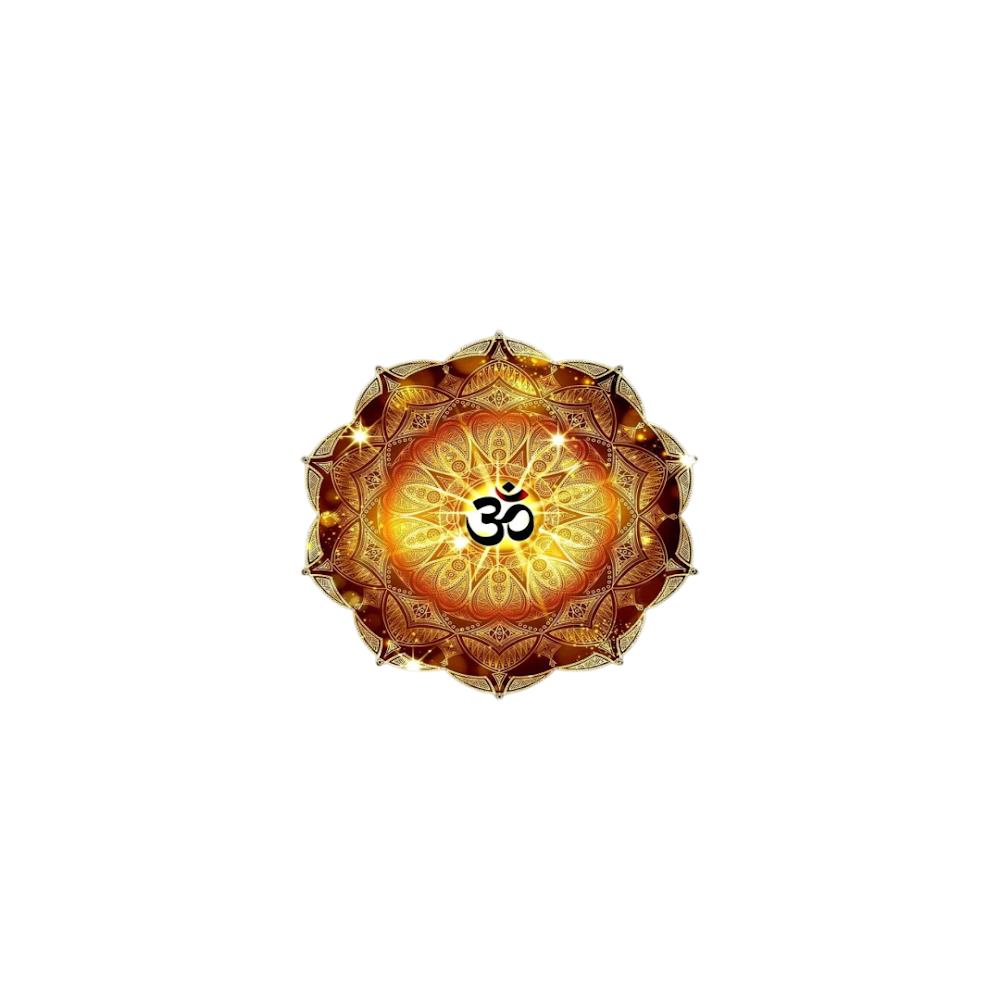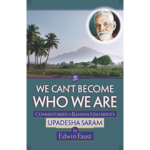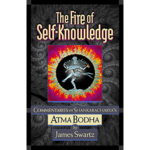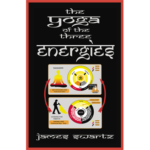Hello Sundari! I hope you and James are well.
It has been a long time since my last email, several things have happened that have tested my self-knowledge, but I can say that despite everything, I continue with the firm knowledge that I am Existence that shines as Consciousness, non-dual, unborn, ordinary, unlimited and always present.
I’m writing again because I have a somewhat technical question, but I wanted your opinion on the matter. I have read the gospel of Ramakrishna and what caught my attention is the comparison he makes between a jnani and a vijnani. In short, it indicates that a jnani is a Self-realized being who knows how to differentiate between Satya and mithya and a vijnani is that jnani who lives in communion and love in this relative and apparently real world.
Is not a vijnani a person who has successfully completed the stage of nidhiyasana? Or am I confusing processes? I have searched for more information on this and can’t find anything clear. I hope you can give me some ideas and I apologize for the sincere concern on my part.
Sundari: Good to hear from you again – and I am happy for you that Self-knowledge stays strong despite the challenges life brings you. That means it is assimilating and working to remove the obstacles in the way of Self-actualization. Good for you!
Ramakrishna was a saint, and probably, a Self-realized being. But he was not a qualified teacher of Vedanta as he was never properly taught. His language is very confusing, and he uses many experiential terms, which are misleading. Essentially, he is correct in many of his statements, but because of the terminology, it is hard to know what he actually means.
What he seems to be referring to with the term ‘vijnani’ is a person who has actualized Self-knowledge, therefore, completed nididhysana. This is someone who can discriminate between satya and mithya, but has gone further by seeing that as there is only Brahman, the Self, all is Brahman. So mithya must be satya. This is correct. All differences dissolve in the Self. Nondual means nothing other than. What he does not do is explain what Self-actualized actually means, he is not giving a proper teaching.
I assume by a jnani he means someone who can discriminate between satya and mithya, but has not yet understood that all is satya. Therefore, he is still in the nididhysana stage. Meaning, he still has residual ignorance or duality obscuring full access to his nondual nature as the Self.
I have added the teaching from Swami Paramarthananda, who is a proper teacher of Vedanta, to show you what a real teaching should be. His explanation of Self-actualization is all you need. Please read it carefully.
What is Self Actualization (Nididyasana)?
Karma Yoga is a preparation for Jñāna Yoga and Jñāna Yoga leads to self knowledge and liberation. Jñāna Yoga is three disciplines, (1) hearing (shravanam), (2) reasoning (mananam)and (3) actualizing (nididhyāsanam). Hearing isextracting the essential teaching of Vedānta by systematic and consistent study of the scriptures under the guidance of a competent living teacher. Mananamis logically dwelling upon the teaching until all doubts with regards to the teachings are eliminated. It is understanding that Vedanta is flawless and factual. Actualizing is the internalization or assimilation of the teaching by dwelling on the teaching until it is spontaneously available during every day transactions.
The process of liberation (moksa sadhana) is presented in Vedanta as consisting of three stages, (1) liberation while alive (jivan mukti), (2) liberation at death (videha mukti) and (2) the end of samsara (samsara niviritti), i.e. no future births.
The seeker starts the path as a doer with sanchita karma, tendencies toward good and bad actions accumulated from previous births. Prārabdha karma is that portion of the sanchita which is actively fructifying in the present birth and agāmi karma is karma the doer accumulates during the current birth.
When the Jīva gains self knowledge through Vedānta sādhanā, the knowledge destroys sanchita and agāmi karma leaving the jnani with prārabdha karma only. This is called jīvan mukti, liberated while living. And when this jñāni exhausts all the prārabdha, the current birth and body caused by the prārabdha is destroyed, which is called videha mukti, liberation at death, so there is no reason to come back. This is called cessation of transmigration (samsara), moving from one body to another.
Nididyasanam
The final stage of Vedanta sadhana is nididhyāsanam whose purpose is to internalize and actualize the teaching Brahma Satyam Jagat Mithyā Jivo Brahmaiva Nā Paraha. “The self is real, the world is apparently real. There is no difference between the self and the Jiva.” It is a fact that I am only limitless existence/consciousness but as a Jiva I am ignorant of this fact it so I have to (1) claim my limitlessness and (2) negate the misconception that I am a Jiva. Claiming limitlessness means claiming that I am not a doer/enjoyer entity. If I don’t accept this fact, even though I know the scripture’s point of view, I am not a jivan mukta. I am still at the doubt removal stage (manana). But if I am convinced that I am the limitless self and am not perfectly satisfied with my new identity I must actualize it. I must:
(A) Get Rid of the Idea that I did Sadhana to get Liberated.
The entire process of moksa from jivan mukti to vidha mukti to the cessation of samsara is based on the idea that I am a Jiva with three types of karma. Nididhyāsanam negates the idea that I am a Jiva, so along with it I need to negate my sadhana. The idea that I am a Jiva and the idea of moksa are two sides of the same coin. I shouldn’t think I did sadhana for moksa because I was free when I was doing sadhana.
(B) Get Rid of the Idea that I am Liberated
If I didn’t do sadhana because I was always the self, I didn’t get liberated either. So I have to get rid of the status of a liberated person because it is a misconception based on an incorrect notion of who I am.
(C) Get rid of the idea that I won’t be Reborn
If I never was a jiva or a jivan mukta, it is also true of videha mukti and the end of samsara (samsara nivritti). So I can’t say I will be liberated at death or that I won’t come back again. These notions should be dismissed during the nididhyasana stage.
(C) Get Rid of the Idea that Qualifications are necessary for Liberation.
The idea that qualifications are necessary for moksa is unconsciously formed during one’s sadhana and needs to be deliberately negated because moksa is my nature, not something I gained, nor which I can lose. This is usually difficult for doers but it is a fact. Persisting in this notion is tantamount to identifying with the doer.
Even though qualifications are not valid as a condition for moksha, sadhana still is required for nididyasana. Why? Keeping up your sadhana once you are liberated is the best gift you can give Isvara for bringing you to Vedanta. Neglecting it is the worst thing you can do. It is the best gift you can give your teacher also (guru dakshina). Neglecting it is the worst gift you can give the guru. Keeping up your sadhana is also the best publicity for Vedanta. And keeping up your sadhana is a blessing for the world (loka seva).
So you should keep the qualifications…discrimination, dispassion, etc… but convert your desire to be free into the idea…which is a fact, incidentally…“I have always been free.” If you think you achieved moksa you are still thinking of yourself as a jiva.
(E) Get rid of the Conventional Experiential Definition of Liberation.
Often people who are convinced that they are the self, still long for some kind of epiphany to validate it, which means that they haven’t completed stage two of Vedanta sadhana (manana). Since I am limitless awareness I am always experiencing myself so I needn’t look for some kind of experiential validation of my nature.
(F) Redefine Liberation – Taking a Stand as the Self – Repeated Internalization of Identity Mantras
I need to continually contemplate on and confidently assert: (1) I am of the nature of eternal all-pervading existence/consciousness. (2) I am the only source of permanent peace security and happiness. (3) By my mere presence, I give life to this material body and experience this material universe. (4) I am never affected by any event that happens in the material world or to the material body. (5) When I forget my real nature, I convert life into a burden. When I remember my nature, I convert life into entertainment.
Commit to memory this mantra from the Kaivalya Upanishad and repeat it until it becomes a continuous and automatic thought. Once it is continuous it will never be forgotten and it will drop out of every day consciousness but be available always when it is needed, like your name.
“Everything is born in me, all things have their existence in me and everything merges back into me. I am that limitless awareness, the one without a second.”
Om Tat Sat
I hope this helps
It’s great to read the works of great beings and saints, but the problem is that very often there is ignorance mixed in knowledge, or the terms used are experiential and confusing.
Ronny: Thanks Sundari! You have given me a wonderful tool to continue working on this stage of nidhiyasana. I’m going to check everything carefully. The road is arduous, but the price of freedom is eternal vigilance.
A big hug
Ángel
Much love
Sundari











